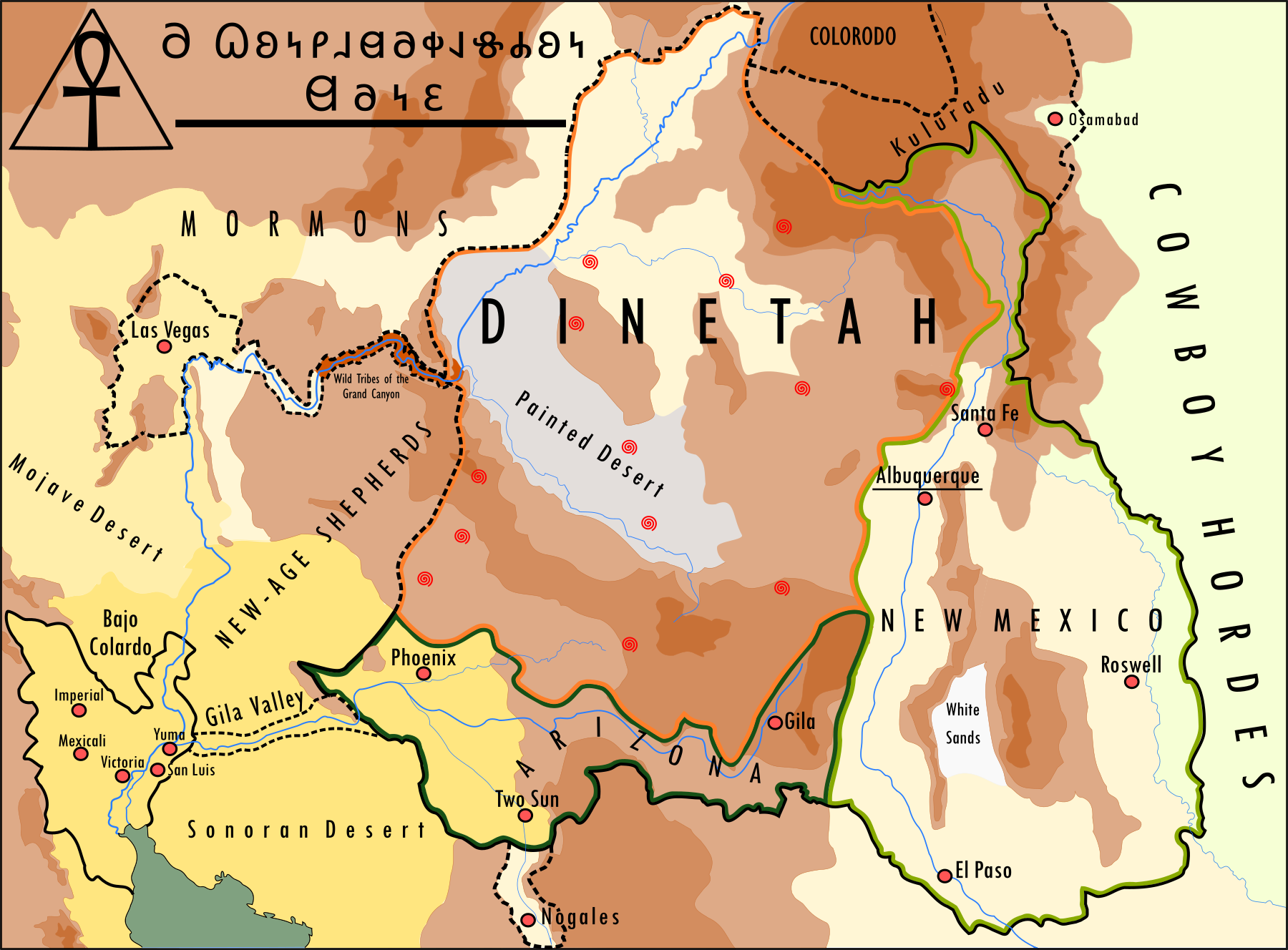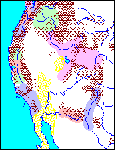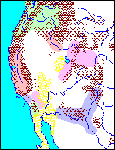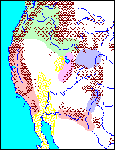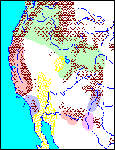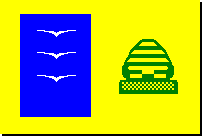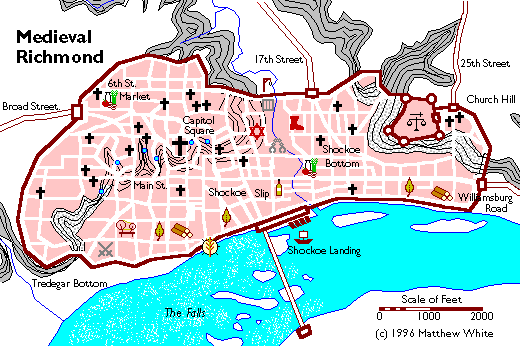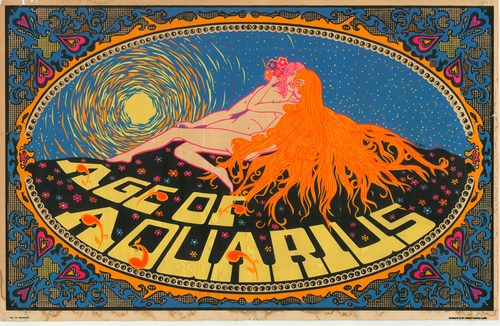A Brief History of the Age of Aquarius
In the towns of Santa Fe, Tumacacori, Arcosanti, Roswell and Sedona, strange and disparate groups had been gathering since the 1970s. Devoted to the esoteric, the otherworldly and the mystical, these so-called "New Agers" had little unifying between them but for a few loose concepts and a disdain for the modern world and its close-mindedness. They saw the coming return to a simpler time as a positive step on humanity's path towards enlightenment.
And so it was that 50 years post-regression, as the wise men saw the early signs of civilizations collapse, that a herald was issued forth from Sedona: the dawning of the Age of Aquarius had come, and it would begin in the American Southwest. Though ridiculed by those "Downers" who still clinged to the hope of society's survival, the herald drew in New Agers from as far away as Cascadia and New England, with entire communities packing themselves into wagons overnight to make the long arduous journey.
The arrival of fellow enlightened individuals was met with jubilations, leading to nearly a month of spiritual enlightenment and partying-hardy, people bringing themselves to ecstasy as a warm=up for the coming age of free love. And then they waited, and waited, and waited... until they finally realized that this whole Age of Aquarius may be more of a "Behold, I shall come quickly" type-deal. They hunkered down, got to farming, and got to killing each other over the nuances of their faith.
In the beginning, these marginal communities were just that: marginal. Though the New Age flourished in the hills to the north of Phoenix, it would only be as more and more people fled south and west for the waters of the Gila and the Colorado, raising the relative population percentage of New Agers. New Age warlords would take control of Flagstaff, but only long after the government had moved operations down to Phoenix.
Those few who could eked out a meagre living as subsistence farmers along the Verde River, while others established colonies in the major cities. For the most part, however, the Arizonan adherents of the New Age became wanderers, domesticating the feral camels that colonized the American southwest. In this way, the New Age spread across northern half of the state. As it did, it came in contact with the Navajo, who were re-asserting their traditional dominion over that land. With most New Agers already incorporating a number of Native American customs into their faith and being fully invested in the stereotype of the "Noble Savage", the two communities got along famously, slowly merging into one another as time went on.
The New Age spread peacefully to the south of Arizona during the Great Droughts of the 200s, when the collapsing state and religious authorities were overthrown by angry locals who had finally lost faith in the old system. Termed "Simpletons" by their detractors for their blatant disdain for "science" and the old world, they embraced New Age and Navajo ideals.
A similar phenomenon ocurred in New Mexico. The New Age in this state was focused to two regions, Santa Fe and Roswell. Santa Fe became a powerful city in its own right as the world collapsed, and one that was plurality New Age. Though the city was toppled by Navajo invaders during the Great Droughts, they quickly used it to assert the New Age all the way down to El Paso. As they spread through the state, they were met with an invasion by the nomadic horsemen of the Pecos River, devotees of the New Age cult based out of the hill-fort of Roswell. Though the New Mexicans would beat back the horsemen all the way to Roswell, they did not crush their religion, instead incorporating it full-heartedly into the New Age corpus, though the remnants of the horde fled east into Oklahoma.
The civilized regions of New Mexico were far more pious towards the New Age then those of Arizona, meaning that it would only become the national religion with the New Mexican conquest of Arizona. It was then that the First Dynasty was declared, and the President was placed at the top of the New Age religious hierarchy. It would only become truly entrenched during the reign of the Third President, who launched a series of persecutions against the Christians and Scientologists who still lived in New Mexican territory. These persecutions were led at the local level by allies, generally holy men and women of the New Age. As his reign co-incided with some of the best rains that the region had seen in centuries, the New Age become almost universally popular.
The decision to empower local Medicine Men and Mediums would prove particuarly pivotal. As an inherently loose religious structure, each holy man or woman of the New Age had his or her own preferred philosophy and higher powers, but little ability to enforce this view upon others. When they were granted resources to enforce "New Age", they generally took this to mean their particular brand of the faith. This led to a system of patron deities and competing temple complexes, a political unit which dominates the inner workings of the Confederacy to this day.
It would be the fourth president of the First Dynasty who would begin one of the most hallowed traditions of the New Age: the pyramids.
Pyramids were a distantly recalled memory of Ancient Egypt, and generally regarded as something holy and supernatural by New Age clergy, who had long employed "pyramid power" in their healing ritual. It would with the work of the priest and scholar "Righteous the Elder", however, that pyramid power would be applied to the dead. In a famous treatise, based on his (admittedly scanty) knowledge of the use of pyramids by the Egyptians and the Mesoamericans, he surmised that pyramids had the capability to repair the bad vibrations inflicted upon one's life essence through the course of their life, and furthermore that they eased the transition process between this world and the next. The tradition of pyramid building began in Santa Fe before the Confederation was fully formed.
Being essentially the national religion of the southwestern people, and being hemmed in two sides by powerful, centrally organized religions, the New Age would have little success in terms of proselyitization. Many of the shepherds and tribesmen in the badlands between California and New Mexico would convert to the faith in its early days, but most of them ultimately were won over by the well-organized efforts of Scientologist missionaries, leaving behind only a substrate in the tribes west of the Colorado. The faith had influence in Las Vegas at its height, but it was already such a religiously diverse land that it made little difference. Some of the tribesmen of Colorodo would convert, but most of them would either be won over by the Mormons or joined the Muslims of Kuluradu. The rocky badlands to the south are even worse, with most folk worshiping a degenerated form of Catholicism that gave alms to La Santa Muerte. New Age only barely holds sway in Nogales, thanks to its proximity to Tumacori.
Perhaps the New Age's greatest success was on the Great Plains. The Pecos watershed had long been dominated by tribes of New Age horsemen who centered themselves on the holy hill-fort of Roswell. These tribes were not, however, cowboys, and were often at odds with the tribes of cowboys and broncos that dominated Texas. So great was the fear of these horsemen of the New Israelites that they allowed themselves to be subjugated by the Dineh. Something strange would happen, however, when a new tribe of cowboys migrated to the area. Displaced by the expansion of the Anderson clan, these cowboys originally hailed from Oklahoma and were of predominantly Cherokee descent. Though New Israelites, they were tenative at best, putting a lot of stock into their pre-Christian faith. In the pro-Native American rhetoric of the New Age, they found solace, creating a strange hybrid religion. Known to themselves as the Keelers after their Judge, and known to the settled peoples of the east as the Okies, they would return to their ancestral homeland with their new faith in hand and create one of the three great cowboy tribes.
A number of schisms and heresies would wrack the faith over its 800 year history. The Raelian Movement, the Ghost Dancers, the Prohibitionists: these names are curses to your typical New Ager. One heresy, however, is hardly even mention, known only to the oldest and the wisest of New Mexican Society: the heresy of the so-called Gray President. Unfortunately, it is somewhat difficult to know just what exactly his heresy constituted, as the authorities have done their best to scrub not only his philosophy from history, but his very name, hence the euphemistic title. It can be surmised that this President attempted to move the nation from its polytheism to a strict henotheism, with emphasis placed upon the god-spirit alternatively known as Trinity or Alamagordo, representative of the sun, supreme potency, and the excesses of man (with some Christian Trinitarian ideas wrapped up in there thanks to confusion). To this end, he even built a new capital in the town of Alamagordo, where it is said the Trinity touched the earth. Today, it stands abandoned, scaring off looters with tales of the "bad vibrations" that permeate the area. Only giant gila monsters inhabit it today.
In the modern era, none of the many temple-complexes rain supreme. Each vies for the ear of the President, hoping to get special favors and privileges, all in the hope of further free love, harmony between all beings, and a tidy tithing profit.


